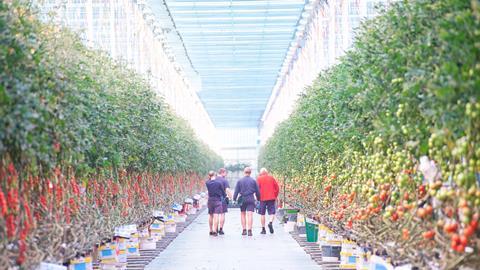Strong imagery can help strengthen a grower’s relationship with retail buyers by demonstrating product quality and sustainable practices
The life of a fruit grower is fraught with challenges, and quite likely, the concept of investing in strong photography is not at the top of the list of priorities. However, rather than viewing this activity as a luxury, which can easily be dispensed with, growers should recognise the value of generating a comprehensive library of images as part of any sales and marketing strategy.
Developing a strong relationship with a buyer is largely dependent on regular, honest communication and transparency. Providing key buyer contacts with seasonal updates on the crop quality and consistency, likely yield and anticipated harvesting timeframe ensures they can make accurate forecasts on the availability of certain produce, when it is likely to be on shelf, and of course the associated pricing.
In addition, photographic evidence offers buyers an insight into the growing patterns, size and visual appeal of fruit – whether it is an established or brand-new variety. These are important factors that a conversation alone will not convey.
Reassuring customers that their fruit has been grown in line with best practice, or even using ground-breaking new technologies, can also be easily conveyed via real-time visual references. With ever-increasing pressure on growers to adhere to strict environmental sustainability protocols, genuine and authentic content can allay any buyer concerns regarding compliance issues.
In a world where AI is fast gaining traction, the use of stock imagery or “fake” AI-manipulated content does little to underpin the integrity of the grower. Nor does it provide the retailer with the desired pictorial storytelling to support the notion that fruit has been lovingly produced by growers, using honed skills that have been passed down from generation to generation.
Finally, creating a refreshing bank of imagery is also essential for any marketing activity, from inclusion on a website, to creating high-impact visuals for a trade show stand, enabling you to present the business in the best possible light.
Having presented a compelling case for investing in quality photography, the next hurdle to conquer is finding a photographer with the requisite skills to deliver the goods. A fruit grower’s expertise does not necessarily lie with sourcing the best photographer for the job. This is a highly specialist area and fees can vary tremendously, but beware, an expensive photographer does not automatically equate to the person capable of generating an outstanding bank of imagery.
Here are my top tips for fresh produce growers:
- Finding a photographer is easy but finding the right photographer – with not only the technical skills, but also a deep understanding and passion for nature – requires scrutiny. You need to feel an innate trust that the person tasked to effectively sell your business via strong imagery understands the balance between commercial expectations and respect for how nature works on a fruit or vegetable farm.
- Make sure you recruit a photographer who can demonstrate proven experience of literally working in the field. Compared with studio work, on-site photography is less controlled and requires a far more flexible approach due to the influence of external factors, such as changing weather conditions, restricted access to key personnel who may be called upon to deal with day-to-day decision-making, and of course unplanned interventions by nature, such as a swarm of butterflies or bees when you are framing a particular shot.
- Only appoint someone who can clearly demonstrate an understanding of nature. While every step should be taken to get the perfect shot, this should never be at the detriment of local flora and fauna.
- Be very clear on the parameters of the brief to the photographer and adopt a prescriptive approach to define the exact shots that you expect to be delivered. This should include photography to illustrate:
- The fruit itself both in situ and picked
- The people and practices behind the successful production of the crop
- The role of nature in producing the end fruit i.e. the soil, water, bees etc
- Adherence to specific environmental and sustainability practices
- Agree a budget and timeframe for the shoot.
- Agree full usage rights for any generated imagery or video content to avoid any unexpected copyright issues.
In conclusion, investing in photography represents a viable asset with a demonstrable return on investment for any fruit-growing business. As such, investments should be incorporated into any carefully considered commercial/marketing plans for the 2025/2026 season.
Brett Lydiatt is an established wildlife and nature photographer. He is the founder of Natures Passions Photography.




